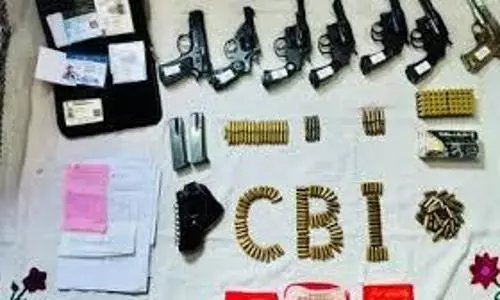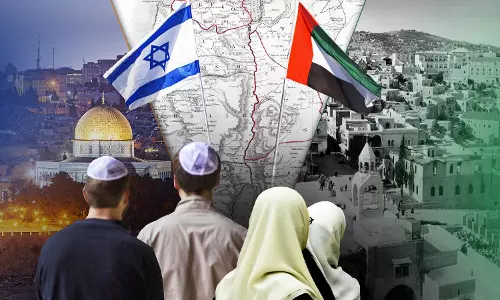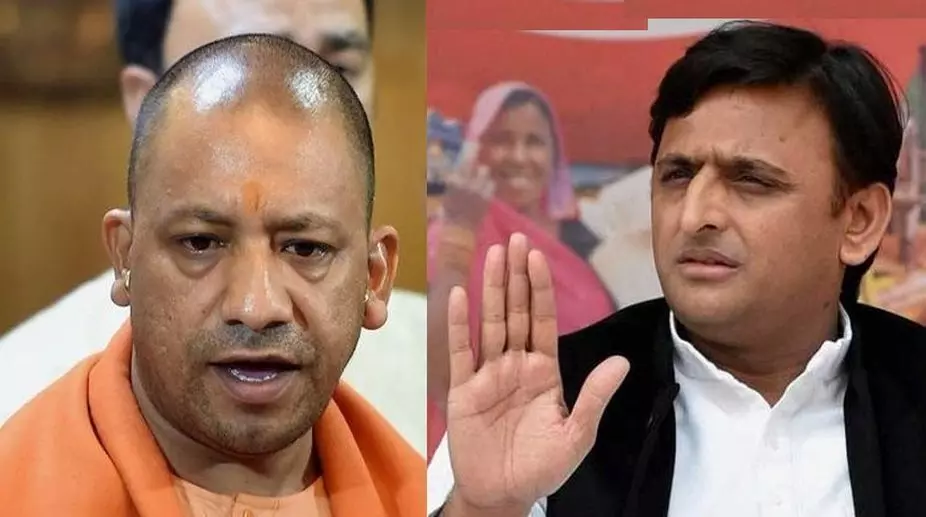
Implications of the UP verdict for Muslims
text_fieldsThe fact that Yogi Adityanath has been re-elected in Uttar Pradesh, means there will be no let-up in Hindutva posturing as he is ultimately a foot-soldier, albeit a powerful one, in the larger ideological project of creating a Hindu rashtra. The big question for the Muslim community that makes up 20 per cent of the state's population, is what further disaster can they expect beyond the psychological "othering" that has in any case been happening.
First, let us examine what will not happen. The BJP is not interested in actual communal riots as they do not want to damage their image projection of maintaining law & order, which was part of the election pitch. Besides, the Muslim community itself is careful to avoid any provocation. Evasion is now part of the overall survival strategy. In towns such as Moradabad where minority populations touch 50 per cent, there are conversations about how communal riots that historically wreak the greatest havoc on Muslims, with the police and state apparatus against them, have not taken place in the last five years. This is a small mercy.
At a time when the economic situation is dismal, the BJP too would not want to rupture local equations. For across the nation's most populated state, from Moradabad, known as a manufacturing hub of brass to Firozabad, known for glass factories, to Varanasi, one of the greatest centres of silk weaving, Muslims and Hindus are tied together economically. Often Muslims are the workers and artisans while Hindus the traders and factory owners, though in some cases minorities also own businesses. The two communities may vote very differently, but even the BJP voter currently does not want economic disruption that large scale violence brings.
Lynching of human beings over transportation of cattle is also unlikely to happen on the scale that it did in the early years of BJP domination of Uttar Pradesh that began in 2014. For one of the dominant themes of this election, in which the Opposition SP Front has increased its vote share, was the problem of stray cattle overrunning the fields and farmers having to do day and night vigils to protect their crops. In the past, farmers would have sold unproductive cattle to a slaughter-house, that would have recycled it for meat, leather and ingredients used by the pharmaceutical industry to make medicines. But the clamping down on slaughter and the attack by cow vigilantes on transportation and trade of cattle led to the current scenario. As people could not risk transporting animals to states with less stringent application of anti-slaughter laws, they just set them lose and hungry animals subsequently wandered in fields eating crop.
Cow slaughter has been banned in all states in the Hindi belt for decades. What some BJP ruled states did is to make existing laws more stringent and allow cow vigilantes to operate. It was seen as an anti-Muslim policy promoted vigorously by the RSS/BJP/VHP/Bajrang Dal. But it has actually turned out to be an anti-people policy that has ruptured the natural cycle of the rural economy and is harming everyone, including the BJP itself. Prime Minister Narendra Modi actually raised the issue during the election campaign and promised to find solutions.
Meanwhile, the BJP would know that some of the most vigorous hate campaigners actually lost the poll in Uttar Pradesh. The leaders who faced charges in the 2013 Muzaffarnagar riots were defeated: Sangeet Som, Suresh Rana and Umesh Malik lost their election in areas impacted by the farmers stir that was able to repair communal relations damaged by the riots. In another part of Uttar Pradesh, a former MLA who made the wildest communal statement in the election when he said that any Hindu who did not vote for him had Muslim blood in their veins, was defeated as well. Raghavendra Singh was defeated by a Muslim woman, Saiyada Khatoon of SP, from Domariyaganj.
Simultaneously, 36 Muslim candidates have won the 2022 election, up from 24 in 2017. This means that nearly 9 per cent of legislators in UP now come from the minority community that makes up 20 percent of the state's population. This is actually better than the all-India representation of minorities in the Lok Sabha that currently stands at 4.9 per cent of MPs while the all-India population of Muslims is 15 percent. The interesting aspect of this data is that this dismal figure has actually been the norm even in the decades of Congress rule and it was only in the Lok Sabha elected in 1980 and 1984 that the percentage of Muslim MPs touched 9 and 8 percent respectively. In the 2009 Lok Sabha preceding the BJP's 2014 win, five per cent of MPs came from the nation's largest minority. Currently 4.9 per cent do. Uttar Pradesh is therefore currently doing better than the national average on minority representation. And this has happened because there are regional parties that are willing to give representation to Muslims per se, and the community has in turn voted enthusiastically for the SP front while turning away from the BSP and not choosing the AIMIM or Congress.
Muslims in Uttar Pradesh cannot be made invisible as they have been in Gujarat. Yet they must continue to live with a consistent polarization of the mind particularly among those at the top of the caste ladder, who actually create narratives for the emerging nation state. Data analysed by the CSDS shows the upper castes such as Brahmins and Thakurs were the most loyal to the BJP; and it must not be overlooked that the savarnas make up nearly 20 per cent of the state's population. Psychological alienation will continue and can reach dangerous levels in the next two years in the run up to the general election. The symbols of the Hindu state will be celebrated such as the Ram mandir in Ayodhya that will be completed before 2024 even as an agitation over the Krishna janmabhoomi at Mathura will begin.


















